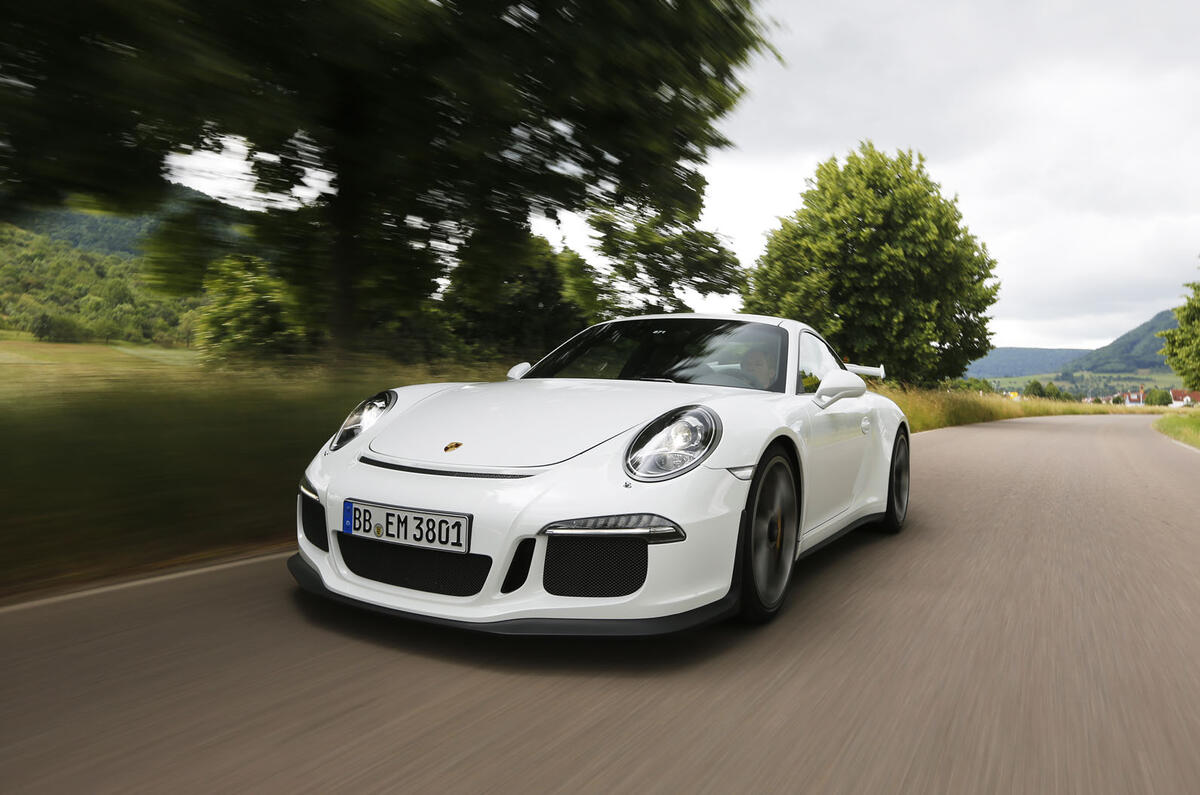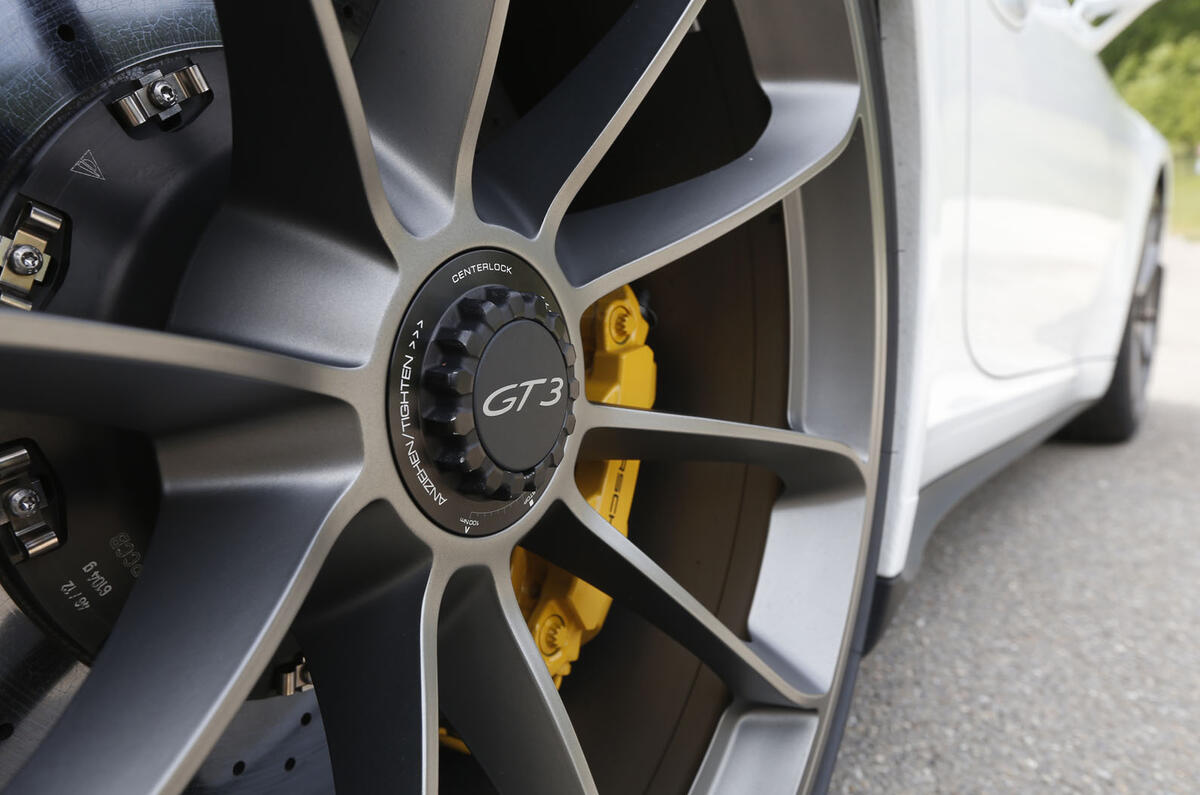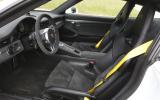Like its predecessors, the new Porsche 911 GT3 has been developed to provide a platform for Porsche’s lucrative clubsport motor racing activities. However, this car also stands on its own as a road car. It is simply sensational.
It stirs the senses on many different levels. For a start, there is the styling. To look at the new third-generation 911 GT3 is to know immediately that it is no ordinary 911 Carrera S. There is a satisfying menace to the appearance that shouts Le Mans, Spa Francorchamps, Monza.
Unique touches include a deep new front bumper with a trio of sizeable air ducts and prominent splitter, a further duct ahead of the bonnet, new exterior mirrors and a subtle sill element beneath the doors.
The rear is dominated by a giant wing, with a ram air intake for the rear-mounted engine and a new rear bumper with vertical air ducts. The basic bodyshell is shared with the 911 Carrera S, with aluminium for the wings, roof, doors and engine lid. Compared with its predecessor, the new 911 GT3 is 118mm longer, 44mm wider and 35kg heavier, at 1430kg. Torsional rigidity has risen, by 25 percent.
So it’s heavier, but friendly, too. The two-seat interior fully reflects the progress made in other 991-series 911 models in its high-quality dashboard, centre console and trim. There are unique instruments, including a big central rev counter red lined at 9000rpm. The substantial seats are fashioned from carbonfibre and the pedals from aluminium. Tick the right boxes on your order form and you’ll even get twin-zone air conditioning, like that applied to the early pre-production prototype we’ve been handed for the day.












































